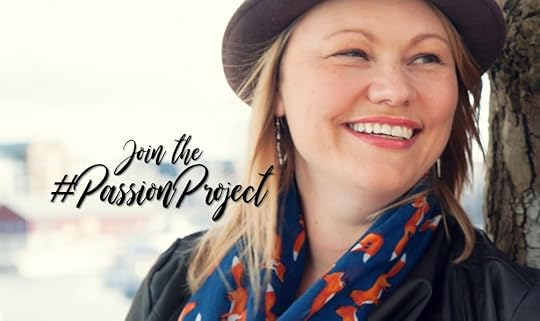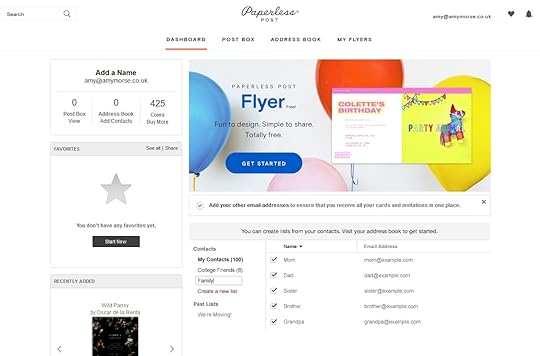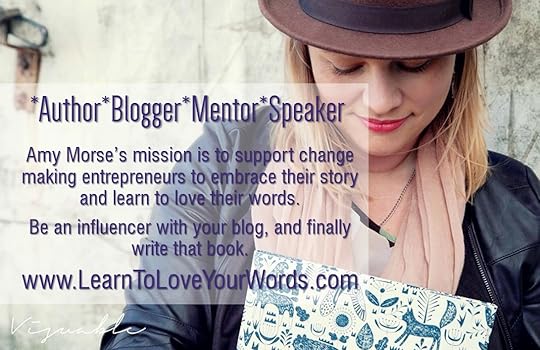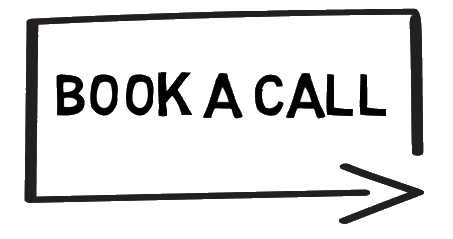Amy C. Fitzjohn's Blog, page 17
May 27, 2019
Passion Projects #3: Leanne Matthews of Purple Frogs. Helping Business Leap Ahead

I recently met Leanne, of Purple Frogs Virtual Assistants (great name), at a ‘Blogging for Business’ workshop I was running on behalf of Women Mean Biz. She was so open to helping the others in the group during that session, I could see she had a natural talent for supporting others. I’m proud to feature Leanne, and Purple Frogs, as my latest Passion Project.

A Passion Project Interview with Leanne Matthews of Purple Frogs
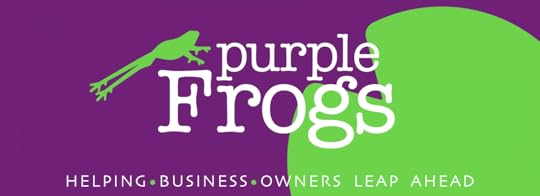
Helping Business Owners Lead Ahead
Why did you decide to do what you’re doing? Tell your ‘Origin Story’
I started my working life as an office junior in the main offices for a touring Theatre Production and over a 10 year period I worked as a receptionist, general administrator and PA, all roles that I enjoyed. I then decided on a career change and for 7 years did something completely different but a change in circumstances found me looking to change careers again and I remembered how much I enjoyed general admin. However, I didn’t really want to go back to a 9-5 position so after a conversation with a friend who asked if I’d considered becoming a Virtual Assistant, I joined Purple Frogs as general manager.
What would you do with your time if you didn’t have to work?
I’d like to travel more without the constant need to check my emails!!
What really makes you smile from the inside out?
My Jack Russell, Bella and being in Nashville, TN
What is your proudest achievement?
Learning to manage mental health struggles that I once thought I wouldn’t survive.
Where do you want to be in 5 years’ time?
As long as I’m enjoying myself I don’t really care where I am.
Who do you serve? Be specific, think of everyone you impact (not just customers)
Small business owners who can’t see the wood for the trees when it comes to their admin. By helping them we are also helping their customers as the business owner can really focus on doing what they love and offering great customer service.
Purple Frogs don’t specialise in one industry as we are a small team of VAs with different skillsets.
How do you want the world to see your business?
Efficient, fresh and fun!
What one thing would you do to change the world?
Dolly Parton once said “If you see someone without a smile, give them yours” I try to be positive and open when interacting with other people as there is nothing worse than someone who brings other people down with constant negativity. It’s a small step to changing the world but brightening someone’s day can make all the difference I think.
If you could have any superpower, what would it be and why?
I’m very happy when I’m swimming so I’d love to be able to breathe underwater.
What advice would you give to your 16-year-old self?
You will survive this.
And finally, is there one thing you wish someone had told you before you went into business?
That one size doesn’t fit all and what works for one business (even if it’s similar to yours) won’t necessarily work for you. Find what works for you and run with it.
Helping business owners to get on with running their business instead of being bogged down with admin is such a useful service, having a VA is definately on my wishlist!
I think Leanne’s answer to the question, “Where do you want to be in 5 years’ time?” is the best yet… “As long as I’m enjoying myself I don’t really care where I am.”
We can all have lofty goals and dreams of financial independence and exotic holidays but none of it matters if you’re not enjoying yourself!
Thank you Leanne
To connect with Purple Frogs and learn more about there work, the website is: http://purplefrogs.co.uk/
Get to know Leanne and the team on Socail Media
Invest in Advertorial on This Blog
Be immortalised on my blog and be one of my featured #PassionProjects
Get your business featured on the blog for £25 / $34 – via PayPal

The post Passion Projects #3: Leanne Matthews of Purple Frogs. Helping Business Leap Ahead appeared first on Amy Morse.
May 23, 2019
7 Differences Between Digital Nomad and Remote Work Jobs

I shared an infographic from a contributor recently about Digital Nomads.
As a response, another contributor offered their viewpoint and insights to take your work portable.
So, what are the differences between Digital Nomads and Remote Workers?
Thank you to Ashley Wilson for being a guest to answer that question.
Do you know the difference between being a digital nomad and a remote worker or do you live under the false impression that these two terms mean the same thing?
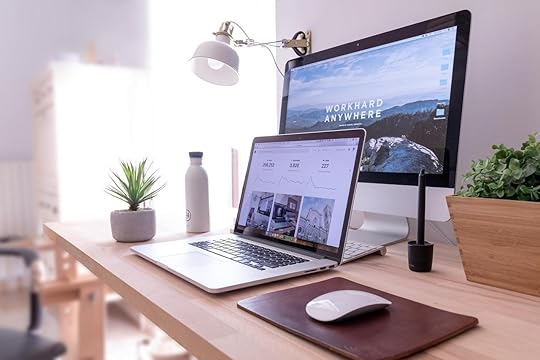
Photo by Domenico Loia on Unsplash
There’s only one thing that digital nomads and remote workers share: they both work remotely. How they work and what kind of work they can do, however, is worlds apart.
Digital Nomad vs. Remote Worker: How it Works
It may surprise you to learn that the terms digital nomad and remote worker refer to different work opportunities. To fully understand what sets the two types of workers apart, it’s important to define both in greater detail by explaining how they differ from one another.
How to Tell a Digital Nomad and a Remote Worker Apart
A remote worker performs work duties as a freelancer, self-employed business owner or part of a team of individuals that work wherever they choose to as long as an internet connection is available. They typically work from home instead of going to the office.
A digital nomad is a remote worker who is location independent and doesn’t stay in the same location for long. They will travel the world and stay at locations that suit them, often focusing on finding places with a good internet connection and low living expenses.
All digital nomads are remote workers, but not all remote workers are digital nomads.
A digital nomad is a small subset of remote workers who opt to switch locations instead of staying in one place. Here are the ten biggest differences between digital nomads and remote workers.
1. A digital nomad’s work conditions might change drastically.
The ideal digital nomad cities and countries have accessible internet connections which make for ideal working conditions. Still, some of the places digital nomads travel to might lack infrastructure (like having a stable internet connection).
If you opt for working with a digital nomad, you should know about those changes so you can arrange tasks and deadlines according to new work conditions.
2. Remote workers usually work from the same location.
While digital nomads explore, remote workers prefer setting roots. The biggest reason certain remote work jobs aren’t a good fit for digital nomadism is work equipment.
It’s next to impossible to transport the tech stack all the time. Examples of this include digital design jobs that often require top of the line workstations with multiple monitors.
When hiring remotely, consider the equipment your employee needs, and search adequate candidates. If a person shows the need for relocation and frequent travel but you need him or her on available for work 40 hours a week, your needs do not align.
3. Some digital nomads do not specialize in one certain type of work.
Remote workers might work for the same company for years, while digital nomads prefer to be in the gig economy. Once the gig ends, they plan to move to a new location. This takes away the stress of missed deadlines.
Many prefer short-term jobs with fast deadlines because they’re using their money to fund the next leg of their travels. Many digital nomads take on temp work because assignments last a pre-determined amount of time and pay quickly.
So, if you need a quick turnaround on your assignment, a digital nomad might be a better choice.
4. Many remote workers have company benefits while most digital nomads do not.
Remote workers enjoy things such as paid time off, vacation days, and health insurance when they have dedicated positions within a company setting.
As part of their benefits package, they’re given things that freelancers and digital nomads do not have access to. If these types of workers want to take a day off, it will always be without pay, so they have to earn enough to cover such days.
5. Digital nomads often face big time zone differences, which makes communication difficult.
Digital nomads are often after clients from wealthy countries while living in lower income countries. This is a sound tactic, as they earn a lot and spend little, but comes with its own set of challenges.
Often, it will be difficult to find the right time to communicate with their clients back in the States.
They may need to adjust their sleeping schedule and work odd hours because of this.
They can’t necessarily place phone calls out of the country any time they want. They must rely on online video messaging services such as Skype to communicate.
That means that having access to a dedicated internet connection is imperative to their success.
If a task requires back and forth communication and repetitive feedback, hiring a digital nomad for the job may result in too much downtime and delay because of communication issues.
6. Equipment and tools may be problematic for digital nomads.
Digital nomads travel light. There’s no room for bulky equipment. Their worldly belongings and work stuff should fit in more than a bag or two.
Therefore, remote developers or designers will rarely be digital nomads, but writers and photographers will.
7. Deadlines feel more looming for digital nomads.
Digital nomadism isn’t well suited for everyone. While remote workers need to be independent and self-starters, digital nomads also have to be adaptable to new circumstances and pick up their tasks where they left off, even after moving to a new region or country.
They also have to know their priorities well. They’ve traveled to a new destination hoping to explore it. It should always be business first, fun later. Clear written communication like project instructions and deadlines can ensure both sides get what they want.
Remote Workers and Digital Nomads have Different Needs
The differences between remote workers and digital nomads are considerable.
From an employee perspective, it means that there are separate sets of rules to follow and obligations to meet.
From an employer perspective, it is substantially different in almost every aspect: from how you handle communications to how you delegate tasks.
Employers will have to identify the unique challenges for each role and come up with solutions that meet their remote employee’s specific circumstances.
For example, frequent traveling that many digital nomads do will affect the workload considerably. You will have to set up some ground rules on how they will handle work during travel.
Or, your digital nomad might currently be in a location that’s remote enough to make communication difficult. Reliable internet connections might not exist, making it problematic for the employee to check in and provide updates about their progress. You’ll have to find a system of regular check-ins.
When you know the difference between remote work and digital nomadism, you can build a mutually beneficial relationship where both parties succeed.
 Author bio: Ashley Wilson is a freelance writer interested in business, marketing, and tech topics. She has been known to reference Harry Potter quotes in casual conversation and enjoys baking homemade treats for her husband and their two felines, Lady and Gaga. You can get in touch with Ashley via Twitter.
Author bio: Ashley Wilson is a freelance writer interested in business, marketing, and tech topics. She has been known to reference Harry Potter quotes in casual conversation and enjoys baking homemade treats for her husband and their two felines, Lady and Gaga. You can get in touch with Ashley via Twitter.
The post 7 Differences Between Digital Nomad and Remote Work Jobs appeared first on Amy Morse.
May 20, 2019
Passion Projects #2: For Women In Business – Hils Crisp

In many ways, my business journey has been on a parallel thread to the next business I’m proud to feature as a Passion Project
I first met Hils Crisp when I was a Trainer at an Enterprise Agency and she came to our events.
As a trainer, you can’t help but look at the participants in a group and think to yourself who you believe will actually go on to start their business and be a success and who won’t.
Of course, you’d never say, it’s not your job as a trainer to either overly flatter participants or crush them – it’s your job to empower, encourage and edu-tain!
However, I remember admiring Hils’ courage, conviction and confidence when she was at the start of her business journey and being quietly sure she would go on to do great things.
Back then, my various side hustles had always been supplemented with employment. In 2015, when I went for it, our paths crossed again and we found ourselves circulating the same networks, knowing and servicing many of the same people with our different, but complementary work.
Let’s meet Hils Crisp…
A Passion Project Interview with Hils Crisp
Empowering Women Entrepreneurs to Shine
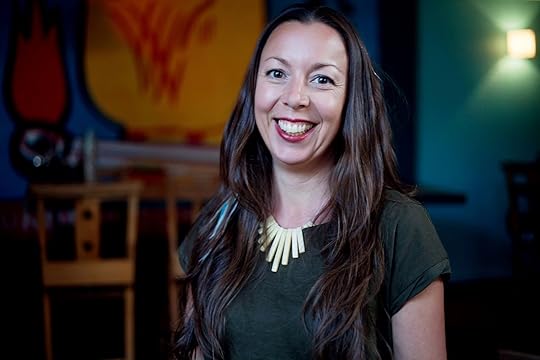
Why did you decide to do what you’re doing? Tell your ‘Origin Story’
I’ve always loved marketing (I have been studying it or doing it since 1991!), especially the psychology and the variety of creativity and numbers. But I worked in an industry that didn’t suit me for far too long, the mainstream beauty industry. I didn’t get excited by it and started to realise that making women feel bad about themselves in order to sell more products was way out of integrity for me.
I went on a long search to find myself, to discover who I truly was underneath the ego, the defences and the conformity. I’ve always had a passion for people and what makes us tick, so I re-trained in various personal development modalities and went self-employed 5 years ago, before really being ready!
Following my personal passion for all things natural, I also started business coaching natural beauty entrepreneurs, helping those get their passion projects out into the world. Then I brought everything together in early 2017 and started coaching and mentoring businesswomen with heart-centred, service-based businesses (like coaches and wellbeing practitioners) to market themselves with more confidence, authenticity and effectiveness so they could make a living (and more) from sharing their gifts with the world. I still do this now and I love it.
What would you do with your time if you didn’t have to work?
Probably run a project around sustainability or reducing our greenhouse emissions – something to try and make the world a better place! Either that or have a cat/animal sanctuary 
May 17, 2019
Passion Projects #1: Rosie Withey, Horses As Teachers

Taking the A37, Wells Road south out of the city of Bristol, beyond the sprawling suburbs, suddenly, the concrete stops and the greenery takes over.
It’s easy to forget how close you are to rolling countryside stretching to the horizon when you live in a Bristol bubble.
The A road curls down through a string of villages, skirting the back of the Mendip Hills, and one of those villages is Clutton.
Turn off the A road, beyond a corridor of ancient hedgerows, you reach Brickyard Farm, Rosie’s farm and paddocks.
Rosie Withey runs Equine Facilitated Learning sessions with her 4-legged colleagues Jack and Bramble.
Her Passion Project is Horses As Teachers.
For the first of my featured Passion Projects, let’s meet Rosie…
Inspiring you to live a life true to yourself
A Passion Project Interview with Rosie Withey
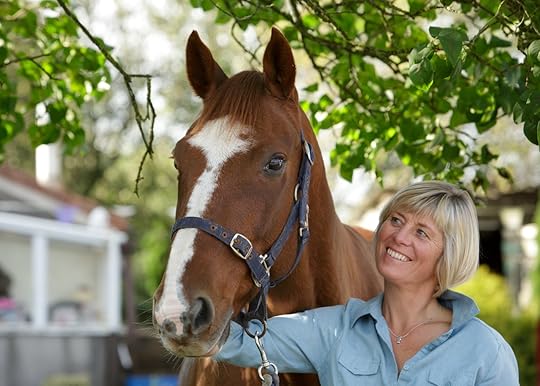
Why did you decide to do what you’re doing? Tell your ‘Origin Story’
Because of my horse Jack!
I had some challenges with him and after trying to fix ‘him’ in every way possible, physically and emotionally an Animal Communicator recommended that I read a book called The Tao of Equus by Linda Kohanov. I didn’t! But a month later I had a fall from Jack and as soon as I hit the road, I knew that I needed to read the book! To cut a long story short after reading the book I ended up flying to Arizona to train to become an Instructor of Equine Facilitated Experiential Learning. The personal development programme and training transformed my life and now I love to support others in the same way.
What would you do with your time if you didn’t have to work?
Travel, travel and more travel – I want to see as much of the world as I can.
I can’t imagine that I would ever want to stop helping people in the way that I do though, so even if I didn’t work I’d want to build a foundation to continue the work that I’ve started – for the next generation.
What really makes you smile from the inside out?
Spending time with my daughter.
What is your proudest achievement?
Getting on that plane to go do Arizona – pursuing the training – reconnecting to my authentic self and stepping out into the world as the real me.
Bringing up my daughter.
Where do you want to be in 5 years’ time?
Living in a beautiful country home, WHICH I OWN! (surrounded by fields and my horses)
Working a 4 day week
Travelling with my partner Andy
Who do you serve? Be specific, think of everyone you impact (not just customers)
Now that I know how to be authentic – when I can be present and authentic I know that I impact everyone I meet!
That’s also what I preach. Simply by being present oneself we can change the world!
How do you want the world to see your business?
Authentic
Transformational
Giving back to the world
What one thing would you do to change the world?
Teach everyone I can to be authentic and present – once they are in that state they would choose to be more mindful about their relationship with fellow humans, animals and the wider environment.
If you could have any superpower, what would it be and why?
Presence
What advice would you give to your 16-year-old self?
Be true to yourself
It’s ok to set boundaries – only do what feels right for you!
And finally, is there one thing you wish someone had told you before you went into business?
There is no such thing as failure, when something doesn’t work out, try something different – it happens to all entrepreneurs!
Rosie has a wonderful, calm and thoughtful way about her. I think her business is about helping others to find a way back to their own feelings.
I‘m privelidged to know her and happy to showcase her as the first of what I hope will be many more inspiring Passion Projects.
Thank you Rosie.
To connect with Rosie and learn more about her work, her website is: https://horsesasteachers.co.uk/
Get to know her through her Facebook page, here: https://www.facebook.com/HorsesAsTeachers/
Invest in Advertorial on This Blog
Be immortalised on my blog and be one of my featured #PassionProjects
Get your business featured on the blog for £25 / $34 – via PayPal

The post Passion Projects #1: Rosie Withey, Horses As Teachers appeared first on Amy Morse.
May 10, 2019
How To Do An SEO Audit of Your Small Business Website

While I know the basics to give your blogs their best chance to be discovered by Google, SEO (Search Engine Optimisation) is an ever evolving discipline with more and more tools and techniques for great quality content to be found and shared. Today I’m hosting a contributor to the blog, with some actionable things you can do to help Google love your website.
Own A Small Business Website? Here Is How You Can Do an SEO Audit
Developing technology and competition have forced entrepreneurs to come up with better digital marketing strategies to help them tackle ever-changing market trends. One of the best online marketing strategies around is the use of Search Engine Optimization, more commonly referred to as SEO.
Search Engine Optimization (SEO) consists of increasing the quantity and quality of traffic to your website through organic search engine results. To be able to achieve a positive effect with this digital marketing strategy, frequent audits should be done to determine how SEO is performing.
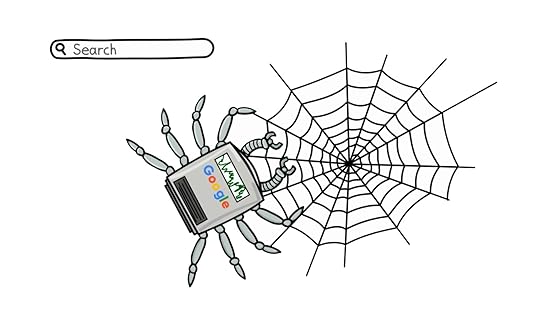
Benefits of an SEO Audit
The primary benefit of undertaking frequent SEO audits is that it increases traffic to your website, leading to a higher ranking. Apart from this, other benefits of an SEO audit are;
It Improves Your Site’s Performance
Site performance is essential for better rankings. Frequent SEO audits will flag up weaknesses in your website which helps you solve them, thus improving performance.
Increased Conversion Rate
All businesses should aim to increase conversion. An SEO audit evaluates your website landing page, its content, and design too, to ensure that you maximize conversion.
Improves Keyword Distribution
Keywords are words or phrases in your web content that enable people to search and find your website via a search engine. An SEO audit will assist you in establishing keywords that can be used strategically to drive more traffic and increase conversion rates.
What Is an SEO Audit?
An SEO audit is the process of analyzing your website to see how well it meets the requirements to get a higher ranking in the search engines. The main objective of this audit is to highlight issues affecting organic search performance.
In addition, some of the significant problems an SEO audit will reveal are potential off-site problems, technical SEO issues, user experience problems, website structure problems and on-page SEO issues. You can do the SEO audit yourself, or you can hire an SEO agency, such as seoanalytics.pro, to do it for you.
How to Do an SEO Audit for a Small Business Website
Having acquired some knowledge on the meaning of SEO and the benefits of an SEO audit, here is an insightful guide on how to conduct your website’s SEO audit.
Check for Google Penalties
It is important to note that if your website is affected by either a manual or algorithmic penalty then it will surely affect your traffic and conversion rate. Tools such as Google Search Console can quickly help you to identify Google penalties on your website.
Look for Your Business Online
This step seems more natural, since all you need to do is to enter your business name into an online search bar and judge the results. Google owns close to 80% of the search engine market; therefore, when conducting an SEO audit, put more emphasis on Google.
Technical SEO Audit
A technical SEO audit ensures that search engines can index your site without problem. A technical SEO audit gives an insight into whether your website is HTTPS, the URL is user-friendly and if your 404 pages are properly optimized.
On-Page SEO Audit
The main goal of this audit is to assist search engines in understanding the content of your site. Some of the significant factors to consider when doing an on-page SEO audit are; title, inbound links, and meta descriptions.
Solve Arising Problems
After identifying the issues, come up with suitable solutions that will improve your website and so bring in more traffic and improve your conversion rate.
The post How To Do An SEO Audit of Your Small Business Website appeared first on Amy Morse.
May 3, 2019
What’s Your Passion Project?

After three years of redundancy warnings every few months, when the seventh one actually happened in 2015, I vowed I would never work for anyone else ever again.
I’d finally escaped!
The fear of ‘lack’ stopped me from taking the hint the first six times and stepping into the dark unknown of self employment.
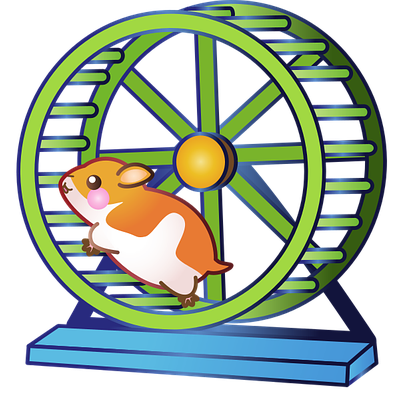
It’s been a rocky road, and I pay myself much less than I earned in the wage-slave-hamster-wheel, but I’m FREE and it feels pretty damn good to be pursuing my own passion projects!
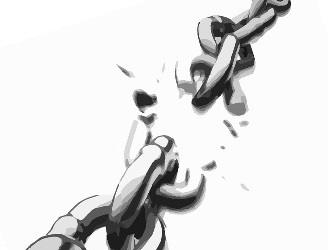
But I’m not a special, unique flower.
Every day I meet amazing, inspiring and awesome people doing the same…
Following their passion.
Doing work they love.
Pursuing a path of their own making.
They have
skills
and strengths they want to make the most of.
They’re driven.
They have an important mission.
They want to make a difference to more than some anonymous shareholder’s bank account!
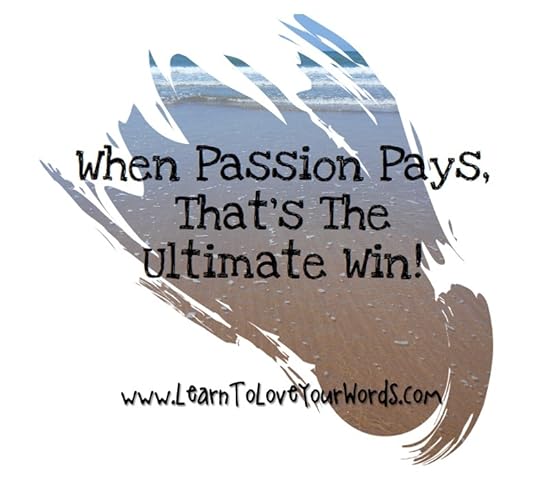
It seems to me that most people start their own business out of passion.
Which is why I’m launching ‘Passion Projects’.
When passion pays, that’s the ultimate win!
Passion Projects
For the pursuers of passion.
The risk takers.
The ones who do it out of love.
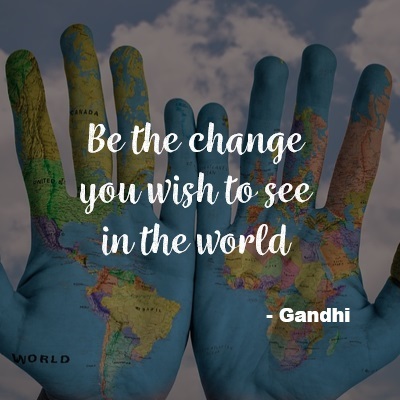
We’re starting a movement, we’re shaking up the way the world works.
We’re building a future economy of #PassionProjects!
I’m Launching Something New
I’d love to showcase some of the great entrepreneurial talent out there and tell their stories.
Each blog feature will be a short interview, telling the story of your Passion Project, including an image and links to your website, social media etc. And of course, I’ll give it plenty of Social Media love!
Do It!
Complete the interview form here, send me your links and a good quality picture of you.
Be immortalised on my blog and be one of my featured #PassionProjects
Invest in Advertorial on This Blog
Get your business featured on the blog for £25 / $34 – via PayPal

The post What’s Your Passion Project? appeared first on Amy Morse.
April 26, 2019
Who Said Digital Is Impersonal?

I’m unashamedly a lover of stationery.
The shelves of my office and art room are sagging under the weight of notebooks, sketchpads and boxes of pens.
Words And Pictures
As a writer, but a visual learner, words create pictures for me.
I describe my fiction writing as playing out a movie in my head, then sharing that movie with readers so they can watch it, in their own way, in their own heads.
While running a digital marketing workshop last week, talking about the importance of images and video, I said – slightly facetiously,
“Just because most people are visual doesn’t mean that they don’t read. When we read, our brain translates the words into images – that’s how books work!”
Creative as I am, I’ve never been able to master the art of graphic design, and these days, running a busy business, I often don’t have time to make greetings cards and invitations like I used to.
I write. I blog. I like words. But every good piece of content should always have a visual element, otherwise, it will disappear into the swirling digital soup of the internet, never to be seen again.
Is Stationery Going Digital?
If you host an event, the experience starts from the moment someone opens their invitation.
Follow up with someone by showing them your appreciation with a Thank You
Surprise that valued client with a birthday card
I’ll always love a notebook. I’ll always enjoy seeing a row of greetings cards on the mantle piece when it’s my birthday. However, there are so many creative tools and options, digital design is getting easier.
Platforms such as Paperless Post, mean that digital doesn’t have to mean impersonal, or inaccessible.
Testing Paperless Post
If you like to send out regular greetings, whether for your business, or in your personal life, this platform is worth exploring.
The platform allows you to create your own online invitations, cards, leaflets and flyers for any occasion.
Dashboard
Once you set up your account and login the Dashboard is simple and familiar
Post Box
You can explore your drafts, sent items etc. – but the thing I really like is that you can schedule when you send your message.
That means you can work on your digital creation when you’re in a creative peak and schedule the greeting to go out at the appropriate time.
Address Book
You can link to your Gmail contacts, create contacts lists or import contacts.
Lovely, Personal and Pretty Emails
Like millions of other businesses, I use MailChimp for my newsletters and updates. However, as I’ve been playing around with this platform, it’s sparking ideas about more creative and engaging ways I can communicate with my business (and personal) tribe.
When I run activities and events, rather than relying on the built in sharing tools of a host platform, I could send really lovely, personal digital invitations? – Much more memorable than a standard email template!
The flyers are also animated – anyone who follows me on Twitter or Facebook will see that I do a love a GIF!
Naturally, as a blogger, my go-to route to inspiration will be to explore the Paperless Post Blog for ideas and tools.
Time to Get Creative!
For instant updates when I publish a new blog post, Follow me on Bloglovin’
For extra goodies and exclusive new information, join my mailing list HERE.
The post Who Said Digital Is Impersonal? appeared first on Amy Morse.
April 25, 2019
How Do I Repurpose Content Without Being Repetitive? (A – Z of Blogging)

You never write a blog post once. Everything you create you can repurpose.
That’s why ‘R’ is for Repurpose in my A to Z of Blogging Series.
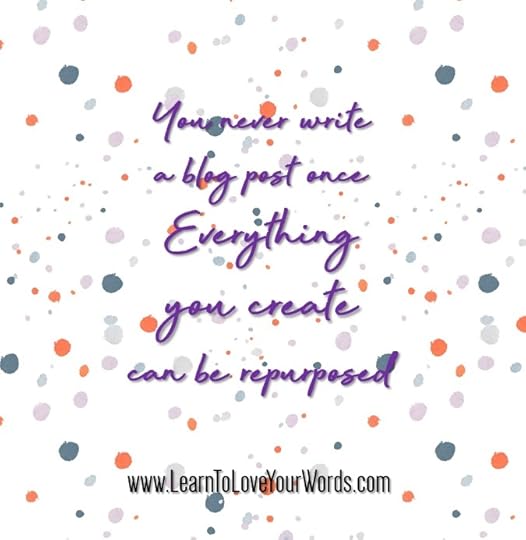
Intellectual Property Has Value
When you’ve written it yourself, you own the ‘Intellectual Property’ of that work. It’s your copyrighted material. There is never any question you have taken something from someone else and passed it off as your own.
Intellectual Property Rights are protected in law because they have value. Anything you create, and that includes words on a blog, therefore, has a value.
The key to avoiding being repetitive when you repurpose your content is to always be adding value at each stage.
There is a multitude of ways you can create ‘information products’ and monetize the content you’ve written, releasing the intrinsic value in your writing to put real money in the bank.
Read my 16 Ways To Repurpose Content blog HERE
A Worked Example
Turning one blog into an eBook and selling it isn’t enough.
There’s no reason for someone to pay for something if they can get it for free, ‘easily and quickly’.
You can, however, repurose one blog into a checklist, infographic or other useful download and give it away in exchange for a newsletter sign up.
This is one simple way you can use a small amount of content to add value in other ways.
Curate and Collate
Curating a collection of blogs, diving deeper into a topic and formatting them into a book does add value because you’ve done the compiling and the creative part – the ‘easily and quickly’ bit – saving time and effort fo an end user.
This is exactly what I’ve done with my ‘Blogging For Business book’.
If someone was determined enough, they could scroll through my hundreds of blogs, written over the course of several years, and find almost everything contained in that book.
However, it would take hours to do so, and they’d then also have to put that information together into a sensible order!
Or, they can spend £8 and have it in one neat little book with everything curated into a step-by-step process.
It takes about an hour to read and is a useful reference book to have on hand when you’re writing. I encourage people to buy the paperback, scribble all over it and highlight bits!

I’m working on similar books on other curated topics from content I’ve created since publishing this book.
Books are a small, low value product you can sell, and the more you have of them, the more income you can generate and more audience you can reach with your business.
Just through attrition alone, you could attract new clients for premium product or service offerings, if you sell enough books to enough people!
What Is Your Time Worth?
Personally, if I can spend a few quid on a book to help me tackle a challenge, instead of sitting scrolling through the internet for days on end, getting more and more overwhelmed and confused, I will – I have better things to do with my time (like running a business – or writing books!).
The other great advantage of having a low cost printed book is I have a small stock of books to sell at workshops or talks I deliver.
Who doesn’t love a signed book to take home after an enjoyable event?
A book is just one example of how to unlock the value in your blogs through repurposing.
You can also you repurpose content you’re created on other channels into a blog post…
Next Time: S in the A to Z of Blogging is for ‘Social Media’. I’ll share more on how you can use your blog and Social Media in tandem to make the most of your marketing and align it with your business plans.
Find out how you can make the most of your content…
Book a FREE 30-minute Inspiration Call with me and invest in your professional development
For instant updates when I publish a new blog post, Follow me on Bloglovin’
For extra goodies and exclusive new information, join my mailing list HERE.
The post How Do I Repurpose Content Without Being Repetitive? (A – Z of Blogging) appeared first on Amy Morse.
April 17, 2019
Are You Brave Enough To Be Quirky? (A to Z of Blogging)

I was a pretty weird kid, ‘quirky’ you might say.
My siblings would probably agree that all things considered, we were a weird family.
One of my many nicknames was Linus because I never went anywhere without my blanket.
I didn’t suck my thumb like normal kids, no, I sucked the middle two fingers on my right hand!
My long, blonde, messy hair couldn’t be tamed.
Dresses were my clothing of choice, yet I was a total tomboy who lived up trees or in makeshift dens.
My knees were always scabbed.
When I wasn’t up a tree pretending I was either Robin Hood or Indiana Jones, my face was in a notebook writing stories.
As a teenager, the other girls were into makeup and the latest Boy Band, while I was into Irish folk music, I was a big fan of Clannad (now that’s quirky!).
I’d wear long tasselled skirts and crocheted jumpers.
I wrote appallingly self-indulgent poetry.
I ate zero veg until my 20’s and always wished I was ‘normal’.
Being called a weirdo was an insult, and an insult I was deserving of. It was easier to escape into my own bizarre little bubble.
I can’t pinpoint how, why or when my view changed – later in life I stopped caring about being called weird or worrying about what I thought people thought about me!
I realised that being quirky was an asset.
That’s why Q is for Quirky in my A to Z of Blogging.
Being Quirky Is An Asset
When you work for yourself, being different is definitely an asset.
If you look, sound and act like everyone else in the crowd, how will anyone ever notice you?
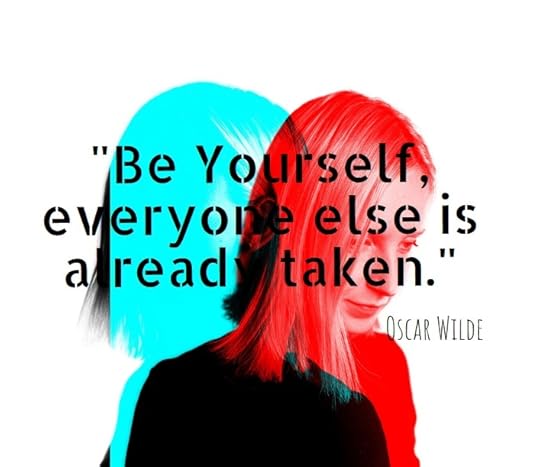
It’s OK to be yourself.
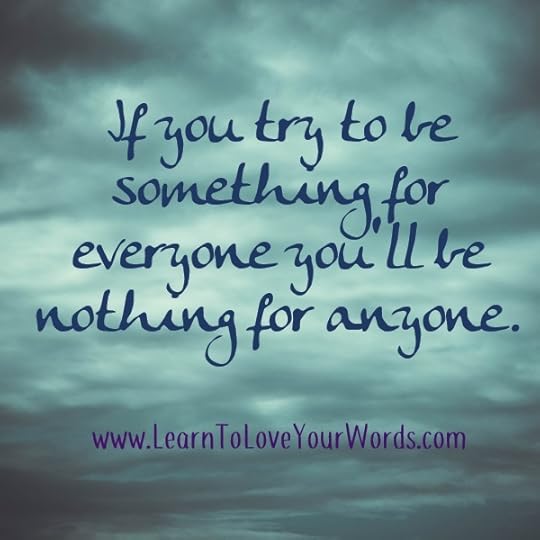
My Greatest Compliment in Business
I was at a networking event last year. A woman came up to me, flung her arms around me and said, “Amy, it’s so good to see you, how are you?”
I had one of those horrendous BLANK moments. Who was this woman? I hadn’t even recognised her!
All I could do was what any good Brit would do, I Kept Calm and Carried On; I made friendly small talk while my brain was doing overtime trying to place her.
Then she clutched her fingers to her face, “Oh, God,” she said, “I’m so sorry! We’ve never actually met before. I’ve just seen you on Social Media, read your blogs and I feel like I already know you!”
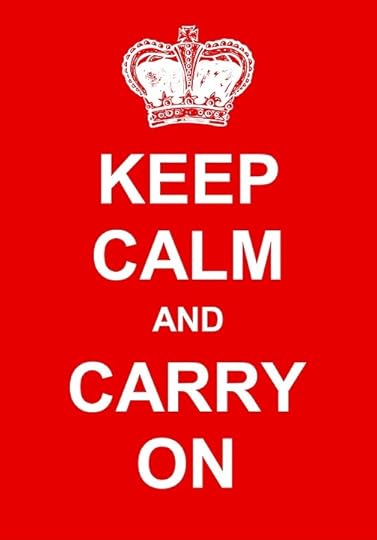
What Makes You Different?
There is a certain amount of raw nerve and trust involved in working for yourself.
The commonest fears people express when it comes to writing their own blogs are, how ‘personal’ they should be? How ‘vulnerable’ should they be? What should and shouldn’t they share about themselves?
My response to those questions is, “How authentic do you want to be on your blog?”
I’d like to share this great TED talk with you. It’s a short (under 5 mins), but inspiring one…
Bringing your whole self to work
A few quotes really resonated with me:
One encouraging word from someone important to you…“Sometimes all it takes is one ally to make you feel comfortable.”
Other people will open up… “Knowing this other side of me gave them permission to be more of themselves as well.”
W hat better way to really get to know your customers than by allowing them to really get to know you!
The opposite effect… “I thought that openness and vulnerability would actually decrease my standing with my team. But it’s done the opposite.”
More than one way to lead… “It’s about finding your strengths and finding ways to amplify them.”
Wasted energies, it’s hard being something you are not, it’s exhausting… “Think of all the wasted energy spent pretending, wishing you were someone different.”
Make it work for you… “There’s a big difference between adapting and disguising.”
I’m not nearly as flamboyant as Dan Clay, but I’ve been called ‘Wizzy-wig’ before (WYSIWYG = What You See Is What You Get).
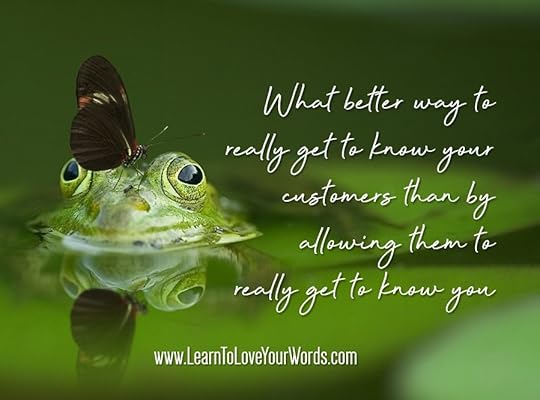
Go on, try it!
Write what you really want to write, in the way you want to write it, and see what happens!
What’s Your Weird? Be Brave. Be Bold. Together we can uncover your story…
Book a FREE 30-minute Inspiration Call with me and invest in your professional development
For instant updates when I publish a new blog post, Follow me on Bloglovin’
For extra goodies and exclusive new information, join my mailing list HERE.
The post Are You Brave Enough To Be Quirky? (A to Z of Blogging) appeared first on Amy Morse.
April 16, 2019
Improve Brand Awareness With A Blog (Guest Post)

Hosting another contributor to the blog today. A differnt perspective on how blogging can benefit your business.
Why Blogging is Great to Improve Your Brand Awareness

For SMEs (small businesses), producing regular high-quality content on their site is a big demand. Copywriters are often a luxury some smaller businesses can’t afford—yet the value of a relevant blog post can do wonders for your brand.
Not only will the world’s biggest search engine—Google—appreciate your site, you’ll land more traffic, and can convert more.
Why should you blog?
First off, what’s a blog?
Well, it’s a website—or web page—where a person or business adds content that’s usually quite informal in tone.
That back to basics guide isn’t there to condescend, but remind businesses that blogs aren’t traditional marketing material like a news item or press release. In fact, it can be even more powerful.
They offer a chance to show off your company culture, personality, and USPs (Unique Selling Point) —it’s an ideal platform to develop your brand with fun content with one eye on creating more CTAs (Calls To Action).
But you do need blogging rules, such as a style guideline.
Why should you want to focus on your blog?
Marketing giant HubSpot showed in 2017 that regular, high-quality blogging can increase ROI significantly.
Developing your strategy
The emphasis is very much on content quality. It’s pointless posting articles that have been hastily thrown together in 20 minutes.
For the best results, you’ll need to blog properly. And to do that, you’ll need the right strategy so that your blogging efforts become a strong lead generation platform.
As such, you can follow the steps below to establish your blogging process and reap the rewards of greater brand awareness:
Write for your audience:
Publish posts that connect with your audience and help them. For example, if you provide a service for a specific sector, examine how you can write posts that provide actionable tips.
Set objectives:
Are you writing to capture key SERPs (Search Engine Results Page) as part of your SEO (Search Engine Optimization) campaign? Do you want to engage with the local press? Set clear and actionable goals to develop your online presence.
Manage the lifecycle of the material:
Evergreen posts are a good idea, ones that will stand the test of time and bring in relevant traffic. But you should also consider repurposing old posts to keep them fresh and relevant.
Set a schedule:
One or two posts a week? One a day? Whatever you think is manageable, stick to your schedule for the SEO and marketing benefits.
Promote on suitable platforms:
Focus on the social media platforms that can provide you with real results. Every business is different, but you should place your latest content on the likes of Facebook to increase your traffic.
Add some personality:
Remember, it’s your company blog—the days of generic, grey, corporate rambling with business spiel are gone. You want content with character and an informal tone to improve readability standards.
Have SEO in mind:
Find keyword terms that’ll deliver you traffic, and structure your content to embrace white hat tactics. Your blog can grow your brand exponentially over time if you amass high-quality posts that draw in regular traffic. And you can do this at low cost, too. If you don’t quite get SEO, then check out Moz’s excellent beginner’s guide for advice.
Maximising your brand awareness
Remember that you can complement your blogging with additional content tactics to improve your brand awareness.
So, this means posting your content across the right social media platforms (as mentioned above), but you can use your web designer to create engaging content to support that.
If you don’t have a web designer, then you can easily use free tools such as Canva to create bespoke content that you can add to Twitter, Instagram, Facebook, or a platform of choice.
And, don’t forget, you can also have a small amount of budget set to one side to promote your content.
Even £10 on, for instance, Facebook can increase awareness across thousands of potential customers.
Ultimately, remember that it’s not just one thing that’ll make blogging work for your brand. But the above tactics, working in tandem, will go a long way to ensuring your business has a powerful online presence.
Learn how to blog properly. Talk to Amy about her Mentoring Packages
Book a FREE 30-minute Inspiration Call with me and invest in your professional development
For instant updates when I publish a new blog post, Follow me on Bloglovin’
For extra goodies and exclusive new information, join my mailing list HERE.
The post Improve Brand Awareness With A Blog (Guest Post) appeared first on Amy Morse.

